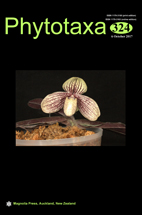Abstract
Phylogenetic analyses of SSU rDNA sequences have shown that coccoid and filamentous green algae are distributed among all classes of the Chlorophyta. One of these classes, the Ulvophyceae, mostly contains marine seaweeds and microalgae. However, new studies have shown that there are filamentous and sarcinoid freshwater and terrestrial species (including symbionts in lichens) among the Ulvophyceae, but very little is known about these species. Ultrastructural studies of some of them have confirmed that the flagellar apparatus of zoospores (counterclockwise basal body orientation) is typical for the Ulvophyceae. In addition to ultrastructural features, the presence of a “Codiolum”-stage is characteristic of some members of this algal class. We studied more than 50 strains of freshwater and terrestrial ulvophycean microalgae obtained from the different public culture collection and our own isolates using an integrative approach. Three independent lineages of the Ulvophyceae containing terrestrial species were revealed by these methods. Unexpectedly each of these lineages contained several isolates that morphologically developed a high degree of phenotypic plasticity, and included hidden phylogenetic diversity that let us to the description of several new genera and species.

